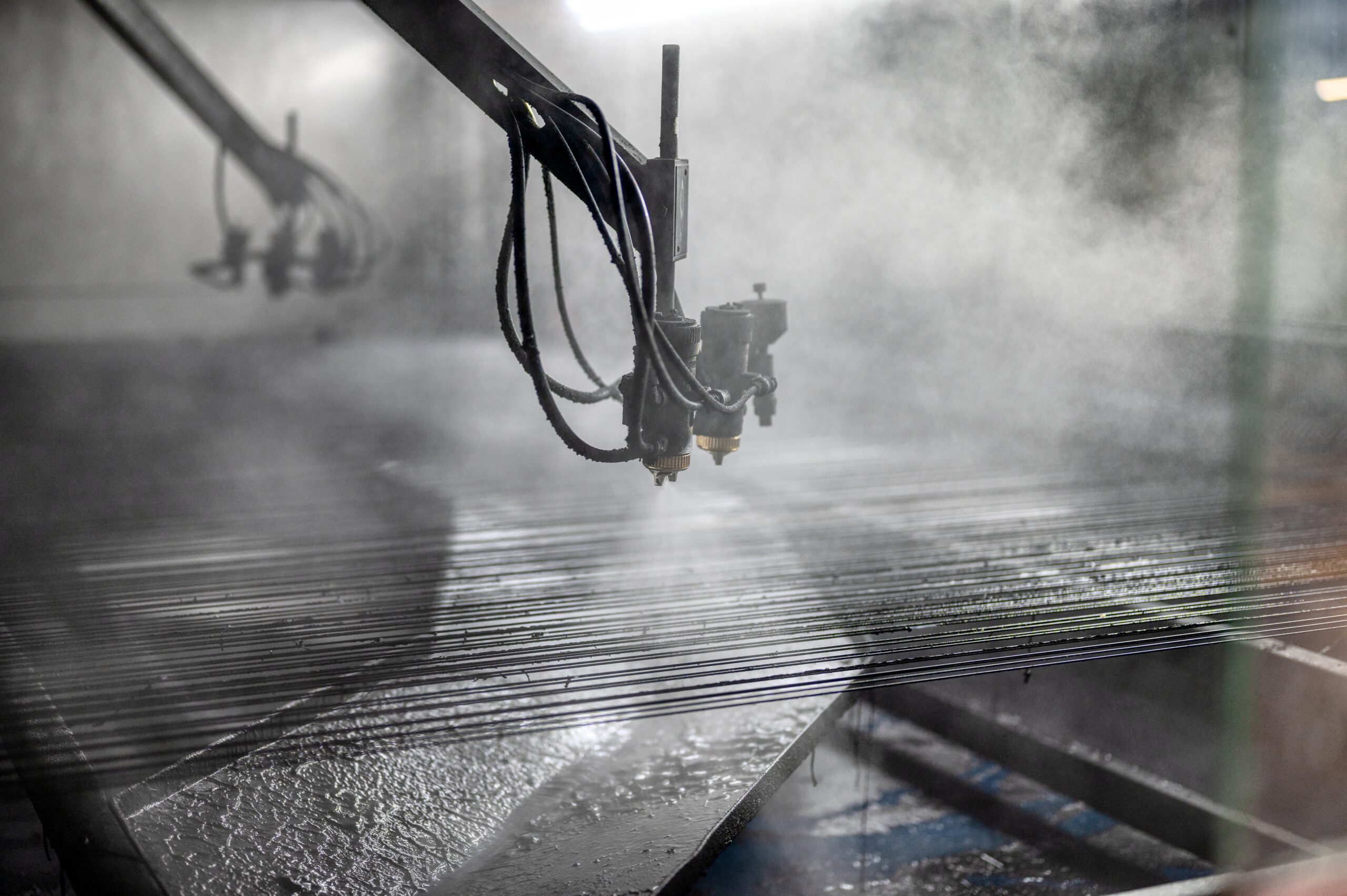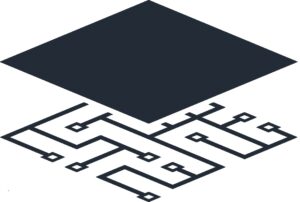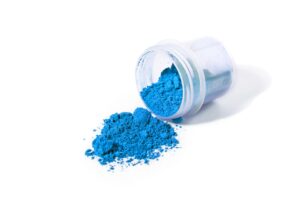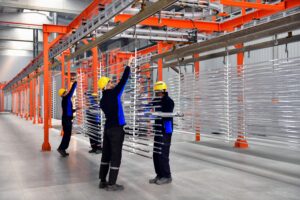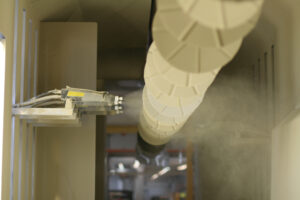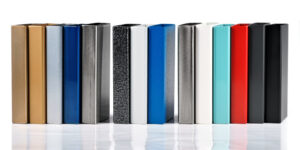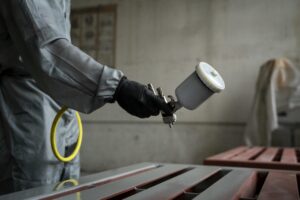Proper blasting, degreasing, and pretreatment are essential for ensuring the powder coating adheres firmly to the surface, maximizing durability and improving powder efficiency, resulting in significant powder savings.
Powder coating is celebrated for its durability, chemical resistance, and attractive finish—but none of those benefits can be fully realized without meticulous surface preparation. Skipping or skimping on blasting, degreasing, and chemical pretreatment can lead to adhesion failures, corrosion undercutting, pinholes, and uneven finishes that force rework and drive up costs. In this guide, we’ll dig into each stage of preparation, explain why it’s critical for coating performance, and share best practices to ensure your substrates are primed for powder perfection.
The Critical Role of Surface Preparation
Every powder coating process begins long before the first pass of the spray gun. The substrate’s surface condition dictates how well powder particles will adhere, cure, and perform over time:
- Adhesion Strength: Mechanical anchoring into surface asperities ensures crosslinked powder resists peeling, chipping, and impact.
- Corrosion Resistance: Conversion coatings create a chemically inert barrier that prevents rust beneath the coating.
- Visual Uniformity: Clean, profile-controlled surfaces eliminate pinholes, craters, and other defects that mar appearance.
Inadequate prep not only compromises performance but also negates warranties and increases waste.
Shot and Grit Blasting: Establishing the Profile
Why Profile Matters
Powder coatings rely on a consistent surface “tooth” to latch onto. Blasting not only removes mill scale, rust, and contaminants but also imparts a defined roughness profile (measured in microns or mils) that correlates with adhesion. This is crucial for both new and previously coated parts, ensuring optimal performance and longevity.
Where and Why Blasting Is Essential
1. Automotive Industry
- Why: Parts like chassis, suspension components, and wheels must endure mechanical stress, corrosion, and environmental factors.
- Blasting Role: Ensures strong adhesion and longevity by creating a robust surface profile.
2. Industrial and Heavy Machinery
- Why: Components exposed to abrasion, impact, and harsh operating conditions.
- Blasting Role: Removes mill scale and contaminants while creating a durable profile for powder coating.
3. Aerospace Industry
- Why: Aircraft parts like landing gear and structural frames require high stress resistance.
- Blasting Role: Creates a uniform, reliable surface to withstand temperature variations and vibration.
4. Marine and Offshore Structures
- Why: Constant exposure to moisture, salt, and corrosive environments.
- Blasting Role: Prepares surfaces to resist rust and saltwater damage, enhancing coating adherence.
5. Construction and Infrastructure
- Why: Metal frameworks and outdoor structures face weathering and corrosion.
- Blasting Role: Removes impurities and roughens the surface, ensuring a lasting protective coat.
Surface Profiles by Material
- Steel and Cast Iron: Typically require a 50–75 µm (2–3 mils) profile to maintain coating integrity.
- Aluminum and Castings: Use lighter blasting media (steel shot or aluminum oxide) to avoid embedding, controlling the profile around 25–50 µm (1–2 mils).
Media Selection
- Steel Grit/Shot: Efficient for heavy rust and thick mill scale, leaving an angular profile.
- Glass Bead: Peens the surface, reducing sharp peak edges, ideal for corrosion-resistant prep on ductile substrates.
- Aluminum Oxide: A hard, sharp abrasive for precision cleaning and profile control on non-ferrous metals.
Key Best Practices
- Monitor Profile: Use test stix or replica tape after blasting each batch to ensure consistency.
- Maintain Equipment: Keep blast cabinet pressure and media cleanliness optimal.
- Post-Blasting Cleaning: Remove spent media and dust before proceeding to chemical cleaning.
Degreasing and Cleaning: Eliminating Organic Contaminants
Even minute amounts of oil, grease, or dirt can act as release agents, preventing proper wetting and curing of powder:
- Sources of Contamination: Drawing oils, cutting fluids, handling lubricants, fingerprints.
- Methods:
- Alkaline Wash: Heated caustic solutions emulsify oils.
- Solvent Cleaning: Fast-evaporating solvents for light grease.
- Ultrasonic Baths: For small parts requiring precision removal.
Best Practices
- Track wash bath pH, temperature, and cleaner concentration daily.
- Rinse thoroughly with deionized or RO water to avoid mineral deposits.
- Implement drag-out controls to extend bath life and reduce drag-in of powder contaminants.
Chemical Pretreatment: Conversion Coatings for Corrosion Protection
After blasting and degreasing, a conversion coating bonds chemically to the metal surface, providing both corrosion resistance and a uniformly reactive substrate for powder:
- Phosphate Coatings (Iron, Zinc, Manganese):
- Iron-Phosphate: General-purpose pretreatment; moderate corrosion protection.
- Zinc/Manganese-Phosphate: Higher corrosion resistance, often used on fasteners or oils.
- Chromate-Free Alternatives:
- Zirconium-based chemistries to meet environmental regulations without sacrificing adhesion.
- Application:
- Controlled immersion or spray—maintaining precise temperature, concentration, and contact time.
Monitoring and Control
- Test bath concentration via titration or test strips.
- Maintain rinse stages to remove chemical residues that can interfere with powder bonding.
- Dry parts quickly after pretreatment to avoid flash rust.
Integrated Process Sequencing
A smooth, repeatable workflow guarantees that each preparation stage enhances the next:
- Staging Area: Segregate raw parts from cleaned and coated parts to avoid cross-contamination.
- Blast → Clean → Pretreat → Rinse → Dry: Follow this sequence without interruption; any deviation can reintroduce contaminants.
- In-Line Conveyors and Closed Systems: Automated lines minimize manual handling and reduce human error.
Consequences of Skipping or Short-Changing Prep
- Adhesion Failures: Edges and corners peel or flake under stress.
- Underfilm Corrosion: Rust creeps underneath coating, causing blistering and delamination.
- Aesthetic Defects: Pinholes, fisheyes, and orange peel texture appear when contaminants volatilize during curing.
These failures trigger rework cycles, increase energy consumption, and jeopardize product warranties.
Quality Control and Verification
Even the best-designed prep process requires ongoing verification:
- Profile Measurement: Use replica tape weekly and log readings to validate blasting consistency.
- Adhesion Testing: Perform ASTM D3359 cross-hatch tests on sample panels after coating.
- Salt Spray and Humidity Exposure: For critical applications, run ASTM B117 salt spray tests for 500+ hours to confirm corrosion protection.
- Visual Audits: Inspect parts at each stage to catch contaminants before powder application.
Best Practices Checklist
- Define target profile and monitor after every blast batch.
- Maintain wash bath parameters (pH, temp, concentration) within specified limits.
- Rinse with deionized water to eliminate hard-water deposits.
- Choose the right conversion coating for your substrate and environment.
- Dry and stage parts in a clean, dust-free area.
- Automate where possible to reduce manual handling errors.
Conclusion and Next Steps
Proper surface preparation is not an optional “extra step”—it’s the foundation of every successful powder coating system. By investing in blasting, degreasing, and pretreatment controls, you save powder, ensure maximum adhesion, corrosion resistance, and finish longevity.
At coatingAI, we’re dedicated to transforming powder coating into precision science. From real-time process monitoring to AI-powered optimization, our Blueprint™ OS helps manufacturers minimize waste, improve consistency, and accelerate time to market.
Are you interested in ensuring consistent powder quality, reducing waste, and improving finish uniformity? Schedule our onsite demo of the Blueprint™ OS today.

